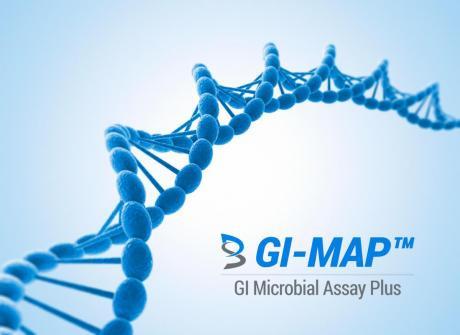Small intestinal bacterial overgrowth, or SIBO, is a well known root cause of IBS by both functional practitioners and some MDs.
But what if your SIBO test comes back negative?
Make sure you took the right SIBO test. It should use lactulose as the testing substrate and check for both hydrogen AND methane gas. If you are negative for SIBO there’s another root cause for your bloating, constipation/diarrhea and general IBS symptoms. It may be LIBO.
LIBO stands for large intestinal bacterial overgrowth. Before SIBO, it was called dysbiosis, now the the term SIBO is catching on, the term LIBO was invented to describe bacterial overgrowth in the large intestine. Both LIBO and SIBO can produce the same type of symptoms: gas, bloating, pain, food sensitivities, anxiety, diarrhea or constipation.
Bacterial overgrowth happens in both the small and large intestines. The difference between the two is that bacterial overgrowth should not occur in the small intestine because it should be sterile of bacteria. When bacteria overgrow in the small intestine, it’s typically due to a motility issue, or the failure of the small intestine to clean itself out. This can be caused by severe or chronic stress, food poisoning, antibiotics use or a functional problem such as low stomach acid, adhesions, or a slow thyroid, to name a few common causes.
LIBO can also be caused by antibiotics or other biome killing medications (birth control pill, NSAIDs, anti depressants, steroids), intense stress, or a diet high in sugars or processed/refined carbs.
Poor oral health and a weakened immune system can also contribute to LIBO, as can an opportunistic infection such as parasites or h. pylori.
The best test for LIBO
You use a breath test for SIBO and stool sample testing for LIBO.
The GI Map is one of the best test for LIBO because it looks for overgrowth and shows which species are overgrowing.
Just like the lactulose breath test is the gold standard for detecting SIBO, the GI Map is the best test for bacterial overgrowth in the large intestine.
The GI Map also measures levels of bacteria in the gut that can trigger an autoimmune disease down the line if the conditions are right.
Autoimmune disease is a three legged stool. To develop it you need a stressor (leaky gut/gluten, chronic stress), the genetics and the gut bacteria associated with that disease. If we eradicate the gut bacteria, we kick one of the legs from under the stool and reduce autoimmune risk.
The GI Map is also the best parasites tests on the market, catching parasites and fungal overgrowth that other tests miss.
Additionally, it provides markers on fat absorption, gluten tolerance, pancreatic enzymes, inflammation, immune function, intestinal bleeding, liver health and leaky gut.
This is one of the best times to take the GI Map because they recently added very useful markers to provide more detailed information about the type of biome imbalances present.
I order the GI Map as part of my client testing package. You can get more info about it here. You can order it as part of a 3 session testing package or use a single session to order the test. Both options include interpretation and recommendations for diet and supplements to naturally rebalance the biome.
Below is a list of new commensal and opportunistic markers for the GI Map.
New Commensal Markers in the GI Map
- Akkermansia mucinophila – Plays a significant role in the gut ecosystem by breaking down mucus polysaccharides. Low levels are associated with obesity and metabolic dysfunction, while high levels are linked to multiple sclerosis.
- Clostridia (class*) – Important producers of short-chain fatty acids, and have many well-documented roles in promoting a healthy intestinal barrier, immune balance, and protection against pathogens.
- Faecalibacterium prausnitzii – Well-known keystone species and a major butyrate producer. Many chronic inflammatory and autoimmune diseases have been associated with low levels of F. prausnitzii.
New Opportunistic Bacteria
- Methanobacteriaceae (family) – Family of bacteria-like microbes that produce methane. High levels have been linked to chronic constipation, as well as some types of SIBO and IBS.
- Fusobacterium spp. – Commonly found in the oral cavity, and may also be found in the intestine. Some are considered opportunistic pathogens, and may promote inflammatory processes and or advanced disease states.
You can have methane overgrowth both in your small intestine and large intestine.
What to do about an overgrowth
Once you determine the type and level of overgrowth present, it can be addressed with antimicrobial herbs and/or powerful probiotics.
If the root cause of bacterial overgrowth is a parasitic infection, it is addressed first, but will also help diminish the severity of bacterial dysbiosis.
If a contributing issue is poor digestion and low enzymes, then adding digestive enzymes will help break down carbohydrates so they don’t feed bacterial growth.
Diet is also an important part of rebalancing the biome. Cutting out sugary carbs and replacing them with the right types of prebiotic fibers or complex carbohydrates is important. This of course is all dependent on if SIBO is also present.
You can have both SIBO and LIBO and in that case they are both addressed together.
Attention is also paid to supporting the good bacteria that help drive a health immune response.
Different types of carbs and fibers feed different types of good bacteria. For example, red foods such as cranberries, pomegranate, red quinoa and beets, feed akkermansia, which is a highly anti inflammatory bacterial species.
Chronic candida or yeast overgrowth that does not respond to treatment is usually caused by bacterial overgrowth. Candida is an opportunistic organism that moves in only when the biome is in chaos. Reducing pathogenic overgrowth and supporting beneficial bacterial is enough to banish most yeast infestations.
Both candida and leaky gut are symptoms of bacterial dysbiosis. Rebalancing the biome will improve gut health, immune function as well as metabolic and mental health.
Reorganizing the biome is like weeding an overgrown garden. You have to pull the weed (kill the overgrowth), fertilize (probiotics, fermented foods and prebiotic fibers) and replant (provide the right diet and environment).
Supporting the nervous system is helpful in rebuilding bacteria. Taking good care of the vagus nerve which connects gut and the brain will help support the healing effort. As well as ridding your environment of beneficial bacteria killers like unfiltered tap water and antibacterial soaps/cleaners.
I’ve developed a system that takes people from testing to weeding to rebuilding in the right order.
Working primarily with food, lifestyle shifts, environmental triggers and the nervous system can be the missing link for the toughest cases.
If SIBO testing did not provide answers, keep digging. The GI Map is a great next step.
When you’re feeling confused, hopeless or lost, you need a map and a guide to find the right answer.


